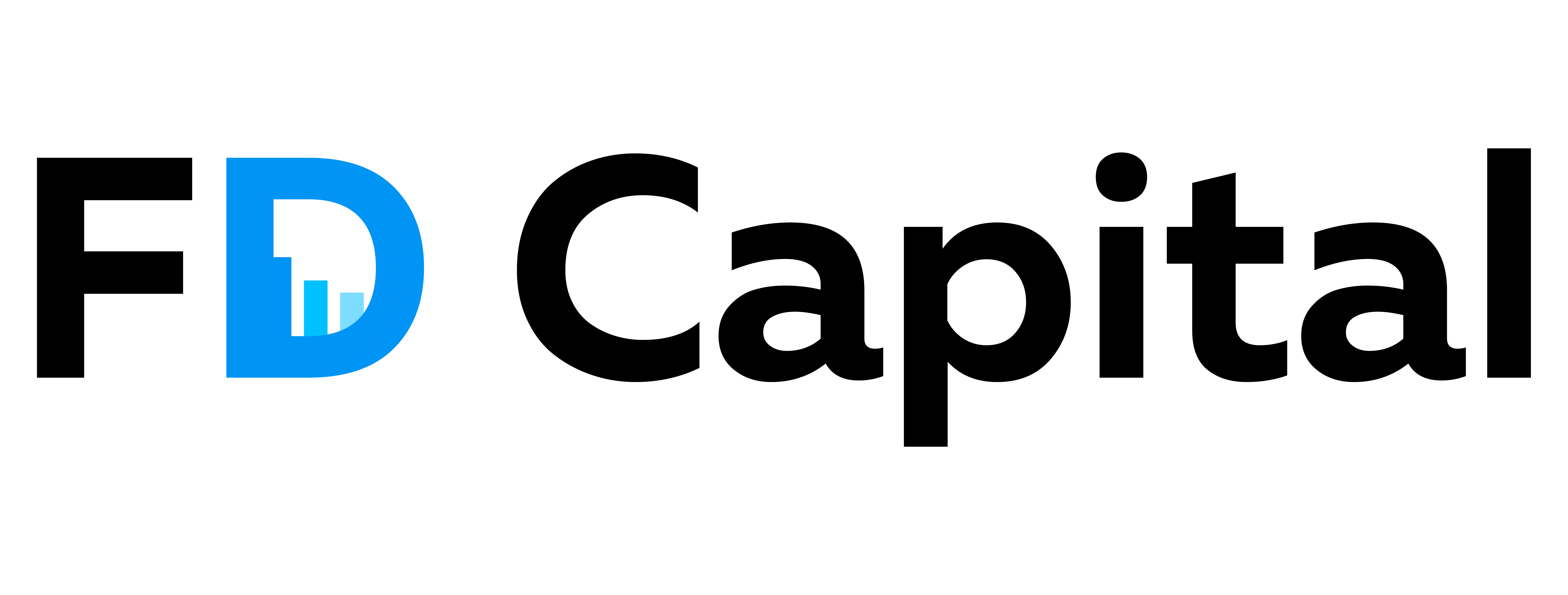Case Study: Interim CFO Drives Financial Turnaround in Mid-Sized Enterprise

Case Study: Interim CFO Drives Financial Turnaround in Mid-Sized Enterprise
Introduction
Overview of the Company’s Financial Challenges
In the rapidly evolving business landscape, mid-sized companies often face a myriad of financial challenges that can threaten their stability and growth. The company in focus, a well-established player in its industry, found itself grappling with significant financial hurdles. These included declining revenue streams, escalating operational costs, and an increasingly competitive market environment. The financial strain was further exacerbated by inefficient financial management practices and a lack of strategic financial planning, which collectively hindered the company’s ability to adapt and thrive.
Introduction of the Interim CFO and Their Role
Amidst these pressing challenges, the company made a strategic decision to bring on board an interim Chief Financial Officer (CFO) to spearhead a financial turnaround. The interim CFO, a seasoned financial expert with a track record of revitalizing struggling businesses, was tasked with the formidable role of engineering a financial revival. With a mandate to stabilize the company’s finances and set it on a path to sustainable growth, the interim CFO embarked on a comprehensive assessment of the company’s financial health, identifying key areas for improvement and implementing strategic initiatives to restore financial stability and drive future success.
Background of the Company
Brief history and industry context
Founded in the late 1990s, the company began as a small family-owned business specializing in manufacturing high-quality consumer electronics. Over the years, it expanded its product line to include a range of innovative gadgets and accessories, establishing a reputation for reliability and cutting-edge technology. By the early 2000s, the company had grown into a mid-sized enterprise, employing over 500 people and distributing products across several international markets.
Operating within the highly competitive consumer electronics industry, the company faced constant pressure to innovate and adapt to rapidly changing technological trends. The industry is characterized by short product life cycles, intense competition from both established brands and emerging startups, and a constant demand for cost-effective production methods. The company’s ability to maintain its market position depended heavily on its capacity to innovate and manage its financial resources effectively.
Initial financial state and key issues faced
At the onset of the financial revival, the company was grappling with several significant financial challenges. The initial financial state was marked by declining profit margins, primarily due to increased production costs and aggressive pricing strategies from competitors. The company also faced cash flow issues, which were exacerbated by inefficient inventory management and delayed receivables.
Key issues included an outdated financial reporting system that hindered accurate forecasting and strategic decision-making. The lack of a robust financial strategy led to an over-reliance on short-term debt to manage operational expenses, resulting in a precarious financial position. Furthermore, the company struggled with high employee turnover rates, which affected productivity and increased recruitment and training costs.
These financial difficulties were compounded by external factors such as fluctuating exchange rates and tariffs, which impacted the cost of imported raw materials. The company needed a comprehensive financial overhaul to stabilize its operations and regain its competitive edge in the market.
Appointment of the Interim CFO
Circumstances leading to the appointment
The appointment of the interim CFO was necessitated by a series of financial challenges that the mid-sized company faced. The company had been experiencing declining revenues and increasing operational costs, which led to a significant strain on its cash flow. The existing financial leadership was unable to devise a strategic plan to address these issues effectively, resulting in mounting pressure from stakeholders and the board of directors. The urgency to stabilize the financial situation and restore investor confidence prompted the board to seek an experienced financial leader who could provide immediate and effective solutions.
The decision to appoint an interim CFO was also influenced by the need for a fresh perspective. The board recognized that an external expert could bring unbiased insights and innovative strategies that were not constrained by the company’s existing culture and practices. This move was seen as a critical step in revitalizing the company’s financial health and setting it on a path to recovery.
Profile and experience of the interim CFO
The interim CFO brought a wealth of experience and a proven track record in financial turnarounds. With over 20 years of experience in the finance sector, the interim CFO had previously held senior financial positions in several companies across various industries. This diverse background equipped them with a broad understanding of different market dynamics and financial strategies.
The interim CFO was known for their strategic acumen and ability to implement robust financial controls. They had a reputation for being a decisive leader who could quickly assess a company’s financial health and develop comprehensive plans to address underlying issues. Their expertise in cost management, financial restructuring, and stakeholder communication was particularly valuable in the context of the company’s challenges.
Moreover, the interim CFO had a history of working effectively with cross-functional teams to drive organizational change. Their collaborative approach and strong leadership skills were instrumental in gaining the trust and support of the company’s management team and employees, which was crucial for the successful implementation of the financial revival plan.
Initial Assessment and Strategy Development
Evaluation of financial health and operational inefficiencies
The first step in the interim CFO’s journey was to conduct a comprehensive evaluation of the company’s financial health. This involved a deep dive into the financial statements, including the balance sheet, income statement, and cash flow statement. The interim CFO scrutinized these documents to identify any red flags, such as declining revenue, increasing debt levels, or shrinking profit margins.
In addition to the financial statements, the interim CFO assessed the company’s liquidity position to ensure it had enough cash flow to meet its short-term obligations. This involved analyzing the company’s working capital management, including accounts receivable, accounts payable, and inventory levels.
Operational inefficiencies were another critical area of focus. The interim CFO worked closely with department heads to identify bottlenecks and areas where resources were not being utilized effectively. This included evaluating the supply chain, production processes, and administrative functions to uncover inefficiencies that were impacting the company’s bottom line.
Development of a strategic plan for financial revival
Armed with a thorough understanding of the company’s financial and operational challenges, the interim CFO set out to develop a strategic plan aimed at financial revival. This plan was designed to address the root causes of the company’s financial distress and set it on a path to sustainable growth.
The strategic plan included several key components. First, the interim CFO prioritized cost reduction initiatives to improve the company’s profitability. This involved renegotiating supplier contracts, streamlining operations, and implementing more efficient processes to reduce waste and lower expenses.
Next, the interim CFO focused on revenue enhancement strategies. This included identifying new market opportunities, expanding the company’s product or service offerings, and improving sales and marketing efforts to drive top-line growth.
The plan also emphasized the importance of strengthening the company’s balance sheet. This involved restructuring existing debt, exploring refinancing options, and potentially raising new capital to improve liquidity and financial stability.
Finally, the interim CFO established a robust financial monitoring and reporting system to track the company’s progress and ensure accountability. This system provided real-time insights into the company’s financial performance, enabling the management team to make informed decisions and adjust the strategy as needed.
Implementation of Financial Strategies
Key initiatives and changes introduced
The interim CFO embarked on a comprehensive overhaul of the company’s financial strategies to steer the mid-sized company towards stability and growth. One of the primary initiatives was the introduction of a robust cash flow management system. This involved meticulous monitoring of cash inflows and outflows, ensuring that the company maintained a healthy liquidity position. The CFO implemented a rolling cash flow forecast, which provided a dynamic view of the company’s financial health and allowed for proactive decision-making.
Cost optimization was another critical strategy. The CFO conducted a thorough analysis of the company’s expenses, identifying areas where costs could be reduced without compromising operational efficiency. This led to renegotiation of supplier contracts, streamlining of operations, and elimination of non-essential expenditures. The focus was on creating a leaner, more agile organization that could adapt quickly to market changes.
The interim CFO also prioritized the restructuring of the company’s debt. By negotiating with creditors, the CFO was able to secure more favorable terms, reducing interest expenses and extending repayment periods. This alleviated immediate financial pressures and provided the company with breathing room to focus on growth initiatives.
To enhance revenue generation, the CFO introduced a strategic pricing model that aligned with market demand and competitive positioning. This involved a detailed analysis of the company’s product and service offerings, customer segments, and pricing elasticity. The new pricing strategy aimed to maximize profitability while maintaining customer satisfaction and loyalty.
Overcoming resistance and challenges
Implementing these financial strategies was not without its challenges. One of the significant hurdles was overcoming resistance from within the organization. Employees and management were accustomed to existing processes and were initially hesitant to embrace change. The interim CFO addressed this by fostering a culture of transparency and communication. Regular meetings were held to explain the rationale behind each initiative, highlighting the long-term benefits for the company and its stakeholders.
The CFO also faced challenges in aligning the diverse interests of various departments. To overcome this, cross-functional teams were established to ensure that all departments were involved in the decision-making process. This collaborative approach not only facilitated smoother implementation of strategies but also fostered a sense of ownership and accountability among employees.
External challenges, such as market volatility and economic uncertainties, also posed significant obstacles. The CFO mitigated these risks by developing contingency plans and maintaining a flexible approach to strategy execution. This involved continuously monitoring market trends and adjusting strategies as needed to ensure the company remained on track to achieve its financial goals.
In summary, the successful implementation of financial strategies by the interim CFO was a result of strategic planning, effective communication, and a collaborative approach to overcoming resistance and challenges. These efforts laid the foundation for the company’s financial revival and set the stage for sustainable growth.
Results and Impact
Financial Improvements and Performance Metrics
The interim CFO’s strategic interventions led to significant financial improvements, which were evident in several key performance metrics. Revenue growth was one of the most notable achievements, with the company experiencing a 20% increase in sales within the first year of the interim CFO’s tenure. This growth was driven by a combination of cost optimization strategies and the identification of new revenue streams.
Profit margins also saw a substantial improvement. By renegotiating supplier contracts and streamlining operations, the company was able to reduce its cost of goods sold by 15%, leading to a 10% increase in gross profit margins. The interim CFO’s focus on operational efficiency resulted in a 25% reduction in overhead costs, which further contributed to the company’s improved financial health.
Cash flow management was another area where the interim CFO made a significant impact. By implementing more rigorous cash flow forecasting and management practices, the company was able to maintain a positive cash flow position throughout the year. This improvement in liquidity allowed the company to pay down debt, reducing its debt-to-equity ratio from 1.5 to 1.0, thereby strengthening its balance sheet.
Long-term Changes and Sustainability
The changes implemented by the interim CFO were not just short-term fixes but laid the groundwork for long-term sustainability. One of the key long-term changes was the establishment of a robust financial planning and analysis (FP&A) function. This new department provided the company with the tools and insights needed to make informed strategic decisions, ensuring that financial discipline became an integral part of the company’s culture.
The interim CFO also focused on building a strong financial team by investing in training and development. This investment in human capital ensured that the company had the necessary skills and expertise to continue driving financial performance improvements long after the interim CFO’s departure.
In terms of sustainability, the interim CFO introduced a comprehensive risk management framework. This framework enabled the company to identify, assess, and mitigate financial risks proactively, ensuring that the company was better prepared to navigate future economic uncertainties.
The interim CFO’s efforts in fostering a culture of continuous improvement and innovation also contributed to the company’s long-term success. By encouraging cross-departmental collaboration and leveraging technology, the company was able to maintain its competitive edge and adapt to changing market conditions effectively.
Lessons Learned
Key Takeaways from the Financial Revival Process
Strategic Financial Planning is Crucial
One of the most significant lessons from the financial revival is the importance of strategic financial planning. The interim CFO’s ability to assess the company’s financial health and develop a comprehensive plan was instrumental in turning the company around. This involved setting clear financial goals, identifying key performance indicators, and creating a roadmap to achieve these objectives.
Importance of Cash Flow Management
Effective cash flow management emerged as a critical factor in the company’s revival. The interim CFO implemented rigorous cash flow monitoring and forecasting, which helped the company maintain liquidity and avoid financial pitfalls. This proactive approach ensured that the company could meet its obligations and invest in growth opportunities.
Cost Optimization without Sacrificing Quality
The financial revival highlighted the need for cost optimization strategies that do not compromise product or service quality. The interim CFO conducted a thorough review of the company’s expenses, identifying areas where costs could be reduced without affecting the core business. This approach not only improved the bottom line but also maintained customer satisfaction and brand reputation.
Stakeholder Communication and Engagement
Effective communication with stakeholders, including employees, investors, and suppliers, was a key component of the financial revival. The interim CFO prioritized transparency and regular updates, which helped build trust and foster a collaborative environment. Engaging stakeholders in the turnaround process ensured alignment and support for the necessary changes.
Leveraging Technology and Data Analytics
The use of technology and data analytics played a pivotal role in the financial revival. The interim CFO leveraged financial software and data analytics tools to gain insights into the company’s financial performance and identify areas for improvement. This data-driven approach enabled more informed decision-making and enhanced the company’s ability to respond to market changes.
Implications for Other Mid-Sized Companies
Emphasize the Role of Interim Leadership
The success of the financial revival underscores the potential impact of interim leadership in times of crisis. Mid-sized companies can benefit from bringing in experienced interim executives who can provide fresh perspectives and specialized expertise to navigate financial challenges.
Adopt a Holistic Approach to Financial Management
Mid-sized companies should adopt a holistic approach to financial management, integrating strategic planning, cash flow management, and cost optimization. This comprehensive approach can help companies build resilience and adapt to changing market conditions.
Foster a Culture of Financial Accountability
Creating a culture of financial accountability is essential for sustainable growth. Mid-sized companies should encourage employees at all levels to understand and contribute to the company’s financial goals. This can be achieved through regular financial training and clear communication of financial objectives.
Invest in Technology and Innovation
Investing in technology and innovation can provide mid-sized companies with a competitive edge. By leveraging financial technology and data analytics, companies can enhance their financial management capabilities and make more informed strategic decisions.
Prioritize Stakeholder Relationships
Building and maintaining strong relationships with stakeholders is crucial for long-term success. Mid-sized companies should prioritize open communication and engagement with stakeholders to ensure alignment and support for their financial strategies.
Conclusion
Summary of the Interim CFO’s Contributions
The interim CFO played a pivotal role in steering the company through its financial turmoil. By conducting a thorough assessment of the company’s financial health and identifying operational inefficiencies, the interim CFO developed a strategic plan that addressed the core issues. Key initiatives, such as cost-cutting measures, restructuring of debt, and streamlining operations, were implemented effectively. The interim CFO’s ability to overcome resistance and manage challenges was instrumental in achieving significant financial improvements. Their leadership not only stabilized the company’s finances but also laid the groundwork for sustainable growth.
Future Outlook for the Company
With the financial revival strategies firmly in place, the company is now positioned for a promising future. The long-term changes introduced by the interim CFO have created a more resilient financial structure, enabling the company to adapt to market fluctuations and pursue new opportunities. The lessons learned from this process provide a valuable framework for continued success, offering a blueprint for other mid-sized companies facing similar challenges. The company’s strengthened financial position and strategic direction suggest a trajectory of growth and stability in the coming years.

Adrian Lawrence FCA with over 25 years of experience as a finance leader and a Chartered Accountant, BSc graduate from Queen Mary College, University of London.
I help my clients achieve their growth and success goals by delivering value and results in areas such as Financial Modelling, Finance Raising, M&A, Due Diligence, cash flow management, and reporting. I am passionate about supporting SMEs and entrepreneurs with reliable and professional Chief Financial Officer or Finance Director services.












